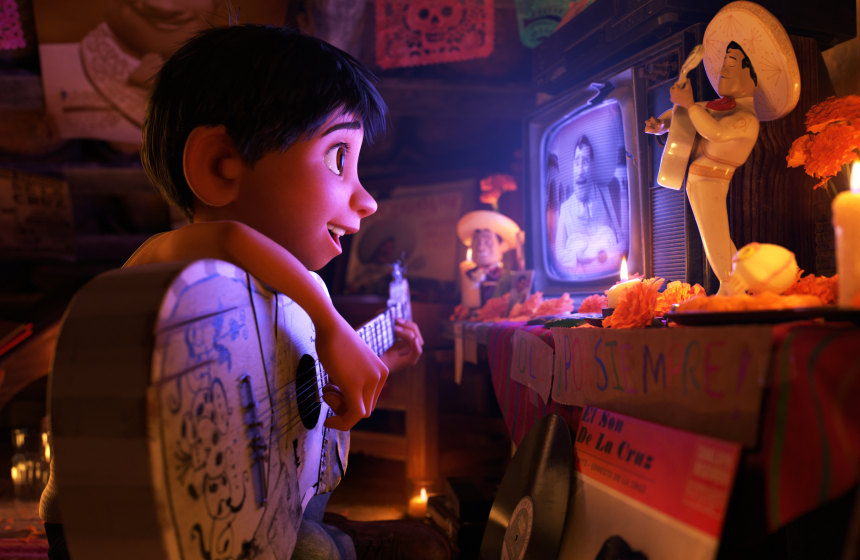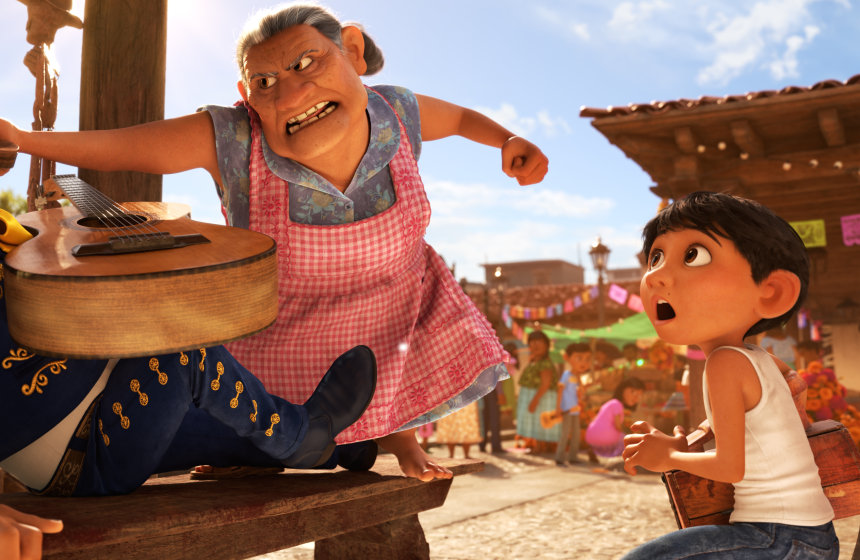By Marissa Armas
Todo Latino Magazine, November 22, 2017 —
From featuring an all-Latino cast, to using popular Mexican sayings like “no manches,” (you’ve got to be kidding me) to hiring Latino consultants to oversee the film from start to finish, Disney Pixar’s new movie “Coco” is getting it right when it comes to telling an accurate Latino narrative.
“It’s not very often that we as Latinos or Mexicans are represented on screen in a way that celebrates the things that make us beautiful, confident and powerful,” said Adrián Molina, “Coco” co-director and a screenwriter. “So with this film, I wanted this journey of Miguel and his family, to showcase all of the things that we see in ourselves but don’t necessarily see on TV.”
The movie “Coco,” which opened in U.S. theaters nationwide on Wednesday, Nov. 22, is themed around the annual Mexican holiday, Día de Los Muertos (Day of the Dead). It tells the story of Miguel, a 12-year-old Mexican boy who wants to follow his dreams of pursuing music, despite his family not allowing it. That’s when Miguel finds himself in the “Land of the Dead,” where he encounters the souls of his ancestors which help him reveal his family’s real history.

In Disney Pixar’s “Coco,” Miguel (voice of newcomer Anthony Gonzalez), who struggles against his family’s generations-old ban on music, creates a secret space where he can play his guitar and soak up the on-screen talent of his idol, Ernesto de la Cruz (voice of Benjamin Bratt). Pixar
Miguel is voiced by young actor Anthony González. The movie’s trickster Hector is voiced by Golden Globe award-winning Mexican actor Gael García Bernal. Actress Renée Victor and Benjamin Bratt also star in the movie.
Molina, who is Mexican-American, said that his own family and personal experiences, along with the experiences of other Latino colleagues, helped the Pixar team ensure that the Latino narratives they were telling were not clichés. The intent of the team was to make sure the movie celebrated Mexican families and Mexican culture and traditions.
“We’re a multifaceted community, so you know being able to sit in a room with a dozen people from the community and talk about those things has a different effect on the story than when you’re just one person in the room, so that was very crucial for me when writing it,” Molina told. “There’s a huge desire within the audience to see Latinos on screens, you know being the heroes and telling their stories, so I think from that perspective it’s going to mean a lot for Latinos and I think it will mean a lot to non-Latinos, too.”
The movie was written and directed by Hollywood director Lee Unkrich, who is white. Unkrich told the New York Times that he had no firm connections to Mexico or its traditions. He also didn’t want to be accused of cultural appropriation, which is why he relied heavily on his Latino team members, as well as why he felt the need to hire several outside consultants. He and his team also took several research trips to Mexico throughout the making of the film to spend time with Mexican families.
One of the consultants hired to help consult in the making of “Coco” was acclaimed Los Angeles-based syndicated cartoonist Lalo Alcaraz. Alcaraz, who was once a big critic of Disney, was contacted by producers to help oversee the direction of the movie. For Alcaraz, this was a fulfillment of his childhood; “not dreams, but requirements.”
“When I was growing up we never dreamed of seeing anything like this on TV or film that shows a little brown boy with his Mexican family, being normal and reflecting us. Representation really matters, and creating content that reflects us, because we don’t see any of it,” said Alcaraz. “This is Pixar’s first film, really, about people of color that aren’t green and pink or inside a little girl’s brain, so it’s a historic moment in animation and Hollywood.”
Alcaraz and other consultants would watch clips of the movie throughout the process and give notes to directors about what they thought worked and what didn’t. They also suggested adding more Spanish words and phrases into the script. He said that the directors were open and listened to the critiques and changes, so that it would ring more authentic to bilingual, bicultural Latinos.
“People are anxious to see it, I’ve never seen anything like it,” Alcaraz told NBC News. “Online people are going bonkers. They are taking their 90-year-old abuelas, and tías with an oxygen tank,” he said with a laugh. “Everyone is taking their elderly relatives to the movies, so this movie is already accomplishing bringing families together.”

In Disney Pixar’s “Coco,” which opened in U.S. theaters on Nov. 22, 2017, aspiring musician Miguel challenges his family’s generations-old ban on music, spending time with a local mariachi. But his grandmother Abuelita promptly puts a stop to it. Pixar
Alcaraz hopes that this movie will serve as an example to other Hollywood executives that it’s possible to make a good, successful film that features people of color in it.
“Hollywood closes itself off by trying to cater products for people, instead of making something that’s unique and honest,” said Alcaraz. “Hollywood is lazy when it comes to trying to be authentic, especially when it comes to Latinos. So this is still 180 degrees from that, and I still can’t believe it’s happening.”
In October, “Coco” broke box office records in Mexico, and creators are hoping it gets the same response in the United States.











